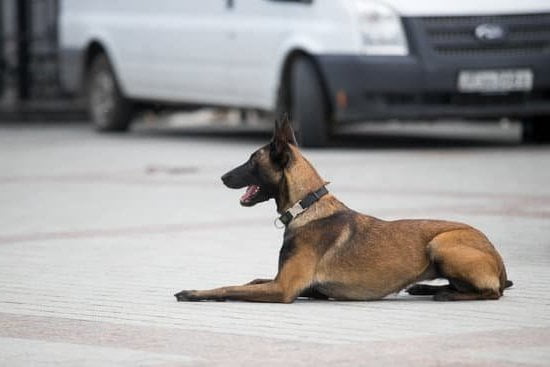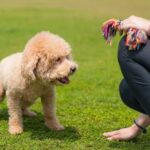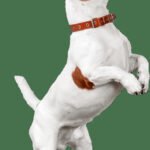Are you wondering how to train your dog not to chew up things? Understanding the reasons behind your dog’s chewing behavior is crucial in addressing this common issue. Dogs may chew due to boredom, teething, anxiety, or simply out of curiosity. By delving into the motivations behind their actions, you can effectively tackle this destructive habit and create a harmonious environment for both you and your furry friend.
One key factor in preventing your dog from chewing on items they shouldn’t is ensuring they receive proper exercise. Physical activity not only helps burn off excess energy but also keeps them mentally stimulated. A tired and contented dog is less likely to engage in destructive chewing behaviors. In addition to regular walks and playtime, consider providing interactive toys or puzzles to keep their minds engaged and ward off boredom-induced chewing.
Another important aspect of training your dog not to chew on inappropriate items is establishing clear rules and boundaries. Consistency is key when teaching your pet what is acceptable to chew on – providing them with designated chew toys and redirecting their attention away from forbidden objects can help reinforce these guidelines effectively. Utilizing positive reinforcement techniques, such as praise and treats for good behavior, can further encourage healthy chewing habits while discouraging destructive tendencies.
The Importance of Proper Exercise
Proper exercise is crucial for maintaining not only your dog’s physical health but also their mental well-being. Regular physical activity can help alleviate stress, anxiety, and boredom in dogs, which are common triggers for destructive chewing behavior. By ensuring that your dog gets enough exercise, you can significantly reduce the likelihood of them resorting to chewing up things around your home.
To help curb your dog’s destructive chewing habits through proper exercise, consider incorporating the following activities into their daily routine:
- Walks: Take your dog on daily walks to provide them with mental stimulation and physical exercise. Explore different routes and environments to keep them engaged.
- Playtime: Engage in interactive games such as fetch or tug-of-war to keep your dog mentally stimulated and physically active. Rotate toys regularly to prevent boredom.
- Training sessions: Incorporate training sessions into your daily routine to challenge your dog mentally and reinforce positive behaviors. Use treats as rewards to make the training fun and rewarding for your furry friend.
In addition to regular exercise, ensure that your dog has access to appropriate chew toys and items that are safe for them to gnaw on. By providing outlets for their natural chewing instincts, you can redirect their behavior onto acceptable items rather than destructible household objects.
Consistency in providing both physical and mental stimulation will go a long way in preventing destructive chewing habits in your canine companion. If you’re struggling with how to train a dog not to chew up things despite these efforts, it may be time to seek professional help from a trainer or behaviorist who can provide tailored strategies for addressing this behavior effectively.
Providing Mental Stimulation
One effective way to prevent your dog from chewing up things is by providing adequate mental stimulation. Dogs are intelligent creatures that require mental exercise as much as physical activity. When dogs become bored, they may resort to destructive chewing as a way to entertain themselves. By engaging your dog’s mind with interactive toys, puzzle feeders, or even training sessions, you can keep their brain busy and reduce the urge to chew on inappropriate items.
Interactive toys such as treat-dispensing balls or chew puzzles can keep your dog entertained for extended periods while also rewarding them for interacting with the toy. These toys not only provide mental stimulation but also satisfy your dog’s natural urge to chew in a constructive manner. Additionally, incorporating short training sessions into your daily routine can challenge your dog mentally and strengthen the bond between you and your pet.
Another important aspect of mental stimulation is varying your dog’s environment to keep them engaged. Rotating their toys, introducing new games or activities, and taking them on different routes during walks can prevent monotony and boredom. Dogs thrive on novelty and enjoy exploring their surroundings, so changing things up regularly can help curb their need to chew on furniture or other objects out of sheer boredom.
It is crucial to remember that mental stimulation should be a consistent part of your dog’s daily routine. Neglecting this aspect can lead to behavioral issues such as excessive chewing or other destructive behaviors. By providing opportunities for mental exercise and engaging your dog’s mind in positive ways, you can significantly reduce their inclination to chew up things around the house.
| Mental Stimulation | Benefits |
|---|---|
| Interactive Toys | Keeps dogs entertained and redirects chewing behavior |
| Training Sessions | Challenges dogs mentally and strengthens bond with owners |
| Varying Environment | Prevents boredom and reduces destructive chewing habits |
Establishing Clear Rules and Boundaries
Designate Chewing Toys
One of the first steps in setting clear rules for your dog is to designate specific toys or items for chewing. Provide a variety of chew toys that are safe and appropriate for your dog’s size and age. Encourage your dog to chew on these designated toys by praising and rewarding them when they choose to chew on the right items. Consistency is key in reinforcing this behavior.
Supervise and Redirect
While training your dog not to chew up things, it’s important to supervise them closely, especially during the initial stages of training. If you catch your dog attempting to chew on something they shouldn’t, calmly redirect their attention to a designated chew toy instead. Avoid scolding or punishing your dog as it may create fear or confusion. Positive reinforcement is more effective in teaching desired behaviors.
Use Deterrents
In some cases, using deterrents can help reinforce the message that certain items are not meant for chewing. You can apply bitter-tasting sprays or use special products designed to discourage chewing on furniture, shoes, or other household items. These products can be effective in deterring dogs from engaging in destructive chewing behavior when used consistently along with positive reinforcement techniques.
By establishing clear rules and boundaries, providing proper guidance, and using positive reinforcement techniques, you can effectively train your dog not to chew up things around the house. Remember that patience, consistency, and understanding are key components of successful training. And if you encounter challenges along the way, don’t hesitate to seek professional help from a trainer or behaviorist who can provide expert guidance tailored to your dog’s specific needs.
Using Positive Reinforcement
Positive reinforcement is a powerful tool when it comes to training your dog not to chew up things. This method involves rewarding your dog for exhibiting the desired behavior, such as chewing on appropriate toys instead of household items. By offering treats, praise, or playtime as a reward when your dog refrains from destructive chewing, you can help reinforce this positive behavior and encourage them to continue making the right choices.
When using positive reinforcement to train your dog not to chew on things they shouldn’t, consistency is key. Make sure to always reward your dog immediately after they exhibit the desired behavior, so they can make a clear connection between their actions and the positive outcome. Additionally, be patient and persistent in your training efforts, as changing ingrained habits takes time and repetition.
In addition to rewarding good behavior, it’s important to avoid punishing your dog for chewing on inappropriate items. Negative reinforcement can often lead to fear or anxiety in dogs, which may worsen their destructive behavior.
Instead of scolding or reprimanding your dog for chewing on something they shouldn’t, simply redirect their attention to a more suitable toy or item. By focusing on promoting positive behaviors through rewards and redirection, you can effectively teach your dog how to distinguish between acceptable and unacceptable chewing habits.
Redirecting Chewing Behavior
Introducing Chew Toys and Treats
One effective way to redirect your dog’s chewing behavior onto appropriate items is by providing them with a variety of chew toys and treats. When selecting chew toys, make sure to choose items that are safe for your dog to chew on and are designed for their size and chewing strength.
Consider options like rubber toys, dental chews, nylon bones, or puzzle toys that can keep your dog engaged for longer periods. Additionally, offering tasty treats or peanut butter-stuffed Kongs can also help redirect your dog’s attention away from destructive chewing.
Supervising and Correcting Behavior
It’s essential to closely supervise your dog, especially during the initial training period when they are learning what is acceptable to chew on. If you catch your dog in the act of chewing on something they shouldn’t be, calmly interrupt the behavior with a firm “No” or “Uh-uh” and immediately redirect them to a proper chew toy or treat.
Consistency is key when correcting unwanted behavior, so be sure to correct your dog every time they engage in inappropriate chewing.
Gradually Reinforcing Good Behavior
As your dog starts to understand which items are acceptable for chewing, be sure to praise and reward them every time they choose the appropriate toy or treat. Positive reinforcement goes a long way in helping your dog learn what behaviors are desirable. You can use verbal praise, pets, or small treats as rewards for good behavior. With consistent redirection and positive reinforcement, your dog will gradually learn not to chew up things they shouldn’t be touching.
Managing the Environment
As a dog owner, one of the key aspects of preventing destructive chewing behavior in your furry friend is managing the environment. By puppy-proofing your home and creating a safe space for your dog, you can significantly reduce the chances of them getting their paws on items they shouldn’t be chewing. Here are some tips to help you with this important aspect of training:
- Keep valuable or dangerous items out of reach: Make sure to store items like shoes, electrical cords, and small objects that could be a choking hazard in secure places where your dog can’t access them.
- Use baby gates or barriers: Limit your dog’s access to certain rooms or areas in the house by using baby gates or other barriers. This can prevent them from wandering off and potentially getting into trouble.
- Create a designated chewing zone: Provide your dog with appropriate chew toys and bones in a specific area of the house. Encourage them to chew on these items by praising and rewarding good behavior.
In addition to managing your home environment, it’s also essential to consider outdoor spaces where your dog may spend time. If you have a backyard or garden that your dog has access to, make sure it is also safe and secure:
- Inspect fences and gates: Regularly check for any holes, gaps, or weak spots in your fence that could allow your dog to escape. Repair any damage promptly to ensure their safety.
- Remove toxic plants: Some common plants are toxic to dogs if ingested. Take the time to identify any toxic plants in your yard and remove them or keep them out of reach of your furry friend.
- Provide shelter and shade: Ensure that your outdoor space has adequate shelter from the elements for your dog. This can include a sturdy doghouse or covered area where they can seek refuge from harsh weather conditions.
By taking proactive steps to manage both indoor and outdoor environments, you can create a safe and stimulating space for your dog while minimizing the chances of destructive chewing behavior. Remember that consistency is key when implementing these tips on puppy-proofing – with time and patience, you’ll see positive results in training how not to train dogs not to chew up things.
Seeking Professional Help
If you have tried various techniques to train your dog not to chew up things and still find yourself struggling with their destructive behavior, it may be time to consider seeking professional help. A professional trainer or behaviorist can offer more advanced training strategies and support tailored to your dog’s individual needs.
They can provide personalized guidance on how to effectively address the root cause of your dog’s chewing habit and create a customized training plan for your furry companion.
Professional trainers and behaviorists have the expertise and experience to assess your dog’s behavior comprehensively and identify any underlying issues contributing to their chewing behavior. By working with a professional, you can gain valuable insights into why your dog may be exhibiting this destructive habit and receive targeted guidance on how to address it effectively.
These experts can also teach you practical techniques for redirecting your dog’s chewing onto appropriate items and reinforce positive behaviors through consistent training methods.
In conclusion, seeking professional help can be a game-changer in successfully training your dog not to chew up things. With the guidance of a trained professional, you can develop a clear understanding of your dog’s behavior, implement effective training strategies, and establish long-lasting habits that promote good behavior.
Remember that every dog is unique, so consulting with a professional trainer or behaviorist ensures that you receive customized support tailored to your specific situation. Don’t hesitate to reach out for help if you feel overwhelmed or unsure about how to address your dog’s chewing habit effectively.
Frequently Asked Questions
How Do You Discipline Your Dog When They Chewing Up Stuff?
When my dog starts chewing up stuff, I try to redirect his attention to his toys or give him a chew specifically designed for dogs. I also use positive reinforcement by rewarding good behavior.
How Do I Get My Dog to Stop Destroying Everything?
To stop my dog from destroying everything, I make sure he gets enough physical and mental exercise to keep him stimulated. I also provide plenty of appropriate chew toys and supervise him closely when he’s around things he shouldn’t destroy.
What Age Do Dogs Stop Chewing Things Up?
Dogs usually stop chewing things up once they reach adulthood, around 1-2 years old for most breeds. However, some dogs may continue to chew if they are bored, anxious, or not getting enough exercise and mental stimulation. It’s important to address the underlying cause of the behavior rather than just waiting for them to outgrow it.

Welcome to the blog! I am a professional dog trainer and have been working with dogs for many years. In this blog, I will be discussing various topics related to dog training, including tips, tricks, and advice. I hope you find this information helpful and informative. Thanks for reading!





